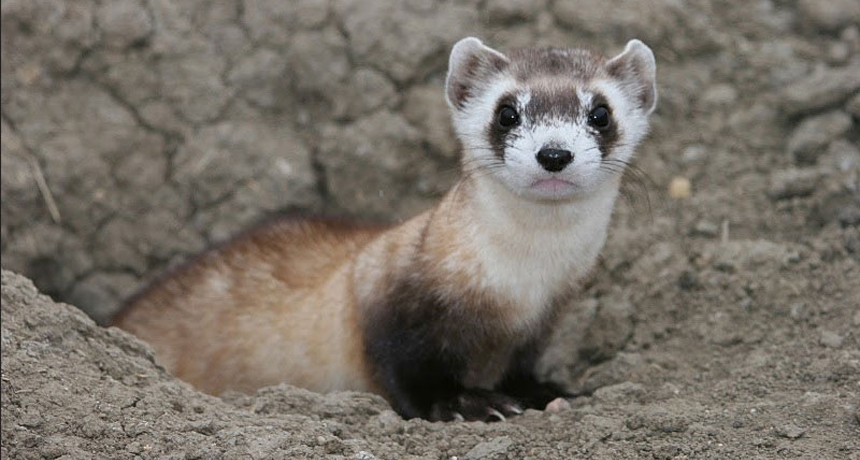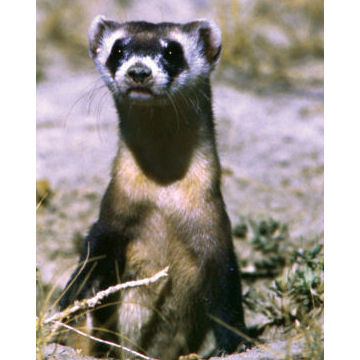A Wild Ferret Rise
Once nearly extinct, wild black-footed ferrets are making a comeback in Wyoming.

Black-footed ferrets are the only native ferrets to North America.
J. Michael Lockhart/USFWS
By Emily Sohn
Black-footed ferrets used to be in big trouble. The furry long-necked creatures look like a cross between a raccoon and a weasel, and they are North America’s only native ferret species. By the late 1970s, however, scientists thought black-footed ferrets had become extinct in the wild.
Now, scientists say, some black-footed ferrets are surviving—and thriving—in the American West. In 2006, the researchers, from the University of Wyoming in Laramie, searched and found nearly 200 ferrets living in a part of Wyoming called Shirley Basin. The team’s surveys have shown rapid growth in the population since 2000.
 |
|
Black-footed ferrets, like this one, nearly went extinct in the American West in the 1970s. Thanks to scientists, wild ferret numbers are now on the rise.
|
| Science |
Over the years, ferret numbers have mirrored the number of prairie dogs in the area. Prairie dogs—which are actually rodents, not dogs—make up 90 percent of what ferrets eat.
Ranchers and farmers have long viewed prairie dogs as pests, and they used to kill the little rodents. At the same time, diseases swept through the prairie dog community and wiped out many of them.
As their food supply declined, ferret populations suffered as well. In the 1970s, scientists tried to breed ferrets in captivity and introduce them into the wild. Their efforts failed, and biologists thought the animals had become extinct.
Then, in 1981, a rancher’s dog discovered black-footed ferrets near a town called Meeteetse, in northwest Wyoming. State wildlife managers trapped as many of the animals as they could. In total, they nabbed 18. Scientists from the Smithsonian Institution’s National Zoological Park in Washington, D.C., then attempted to get these survivors to breed.
The researchers eventually persuaded seven ferrets to breed. Over many generations, the group and its offspring have successfully produced more than 4,800 animals.
The first 228 individuals that came out of the program went to live in the Shirley Basin. Soon after, disease struck prairie dogs living in the area. Surprisingly, the ferrets got sick, too.
Since then, biologists have taken ferrets that were raised in captivity and introduced them in 12 other places. At least two of these populations seem to be doing well. To know for sure if the reintroductions are working, scientists will have to carefully survey the animals and their progress, says Philip J. Seddon of the University of Otago in Dunedin, New Zealand.
In the “bad old days of species reintroductions,” he says, scientists had the wrong attitude of “Let’s just chuck them out there and come back later to see if any survived.”
Another key to ferret survival is habitat protection. Without enough space to roam in and food to eat, the animals will suffer again.







